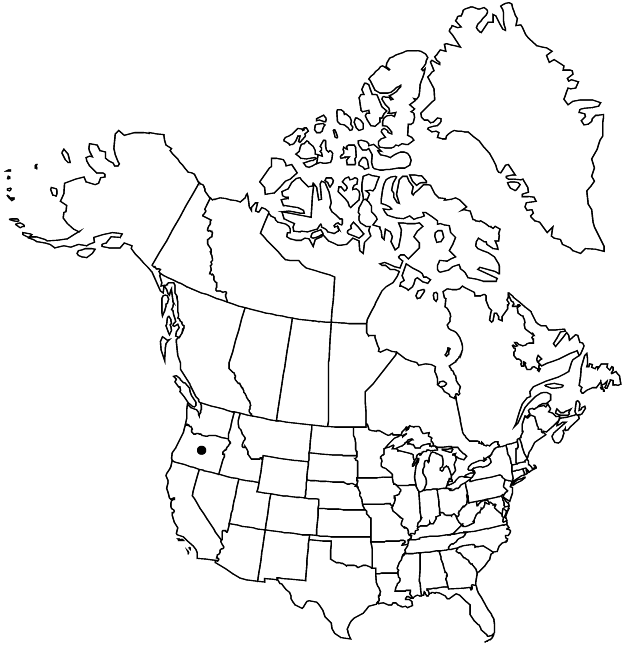Difference between revisions of "Eriogonum novonudum"
Leafl. W. Bot. 4: 178. 1945.
FNA>Volume Importer |
imported>Volume Importer |
||
| (5 intermediate revisions by one other user not shown) | |||
| Line 8: | Line 8: | ||
}} | }} | ||
|common_names=False naked wild buckwheat | |common_names=False naked wild buckwheat | ||
| + | |special_status={{Treatment/ID/Special_status | ||
| + | |code=E | ||
| + | |label=Endemic | ||
| + | }} | ||
|basionyms= | |basionyms= | ||
|synonyms= | |synonyms= | ||
| Line 24: | Line 28: | ||
|elevation=700-1200 m | |elevation=700-1200 m | ||
|distribution=Oreg. | |distribution=Oreg. | ||
| − | |discussion=<p>Eriogonum novonudum is known only from a few scattered populations primarily in the Leslie Gulch area of Malheur County. This tall, openly branched species is easily distinguished from the related E. ochrocephalum var. calcareum, in which the inflorescence is reduced to a capitate cluster of involucres.</p> | + | |discussion=<p><i>Eriogonum novonudum</i> is known only from a few scattered populations primarily in the Leslie Gulch area of Malheur County. This tall, openly branched species is easily distinguished from the related <i>E. ochrocephalum </i>var.<i> calcareum</i>, in which the inflorescence is reduced to a capitate cluster of involucres.</p> |
|tables= | |tables= | ||
|references= | |references= | ||
| Line 33: | Line 37: | ||
-->{{#Taxon: | -->{{#Taxon: | ||
name=Eriogonum novonudum | name=Eriogonum novonudum | ||
| − | |||
|authority=M. Peck | |authority=M. Peck | ||
|rank=species | |rank=species | ||
| Line 47: | Line 50: | ||
|publication title=Leafl. W. Bot. | |publication title=Leafl. W. Bot. | ||
|publication year=1945 | |publication year=1945 | ||
| − | |special status= | + | |special status=Endemic |
| − | |source xml=https:// | + | |source xml=https://bitbucket.org/aafc-mbb/fna-data-curation/src/2e0870ddd59836b60bcf96646a41e87ea5a5943a/coarse_grained_fna_xml/V5/V5_553.xml |
|subfamily=Polygonaceae subfam. Eriogonoideae | |subfamily=Polygonaceae subfam. Eriogonoideae | ||
|genus=Eriogonum | |genus=Eriogonum | ||
Latest revision as of 22:12, 5 November 2020
Herbs, erect, not scapose, (3–)3.5–9 × 0.5–1 dm, glabrous, grayish. Stems spreading, without persistent leaf bases, up to 1/5 height of plant; caudex stems absent; aerial flowering stems erect, slender, solid, not fistulose, 1.5–3.5(–4) dm, glabrous. Leaves basal, 1 per node; petiole (1–)2–4(–6) cm, tomentose; blade spatulate to narrowly obovate, 1–3(–4) × 0.3–0.8(–1.3) cm, densely white-tomentose on both surfaces, margins plane. Inflorescences elongate cymose-umbellate, 8–45(–50) × 5–10 cm; branches dichotomous, glabrous; bracts 3–5, scalelike, triangular, 1–2 mm. Peduncles absent. Involucres 2–5 per cluster, turbinate, 3–5 × 2–3 mm, rigid, glabrous; teeth 6–8, erect, 0.5–1 mm. Flowers (1.5–)2.5–3.5 mm; perianth dull greenish white to pale yellow, glabrous; tepals connate proximally, monomorphic, lanceolate to oblong; stamens exserted, 3–5 mm; filaments pilose proximally. Achenes light brown, 2.5–3 mm, glabrous.
Phenology: Flowering May–Sep.
Habitat: Sandy clay slopes and washes, saltbush and sagebrush communities, juniper woodlands
Elevation: 700-1200 m
Discussion
Eriogonum novonudum is known only from a few scattered populations primarily in the Leslie Gulch area of Malheur County. This tall, openly branched species is easily distinguished from the related E. ochrocephalum var. calcareum, in which the inflorescence is reduced to a capitate cluster of involucres.
Selected References
None.
